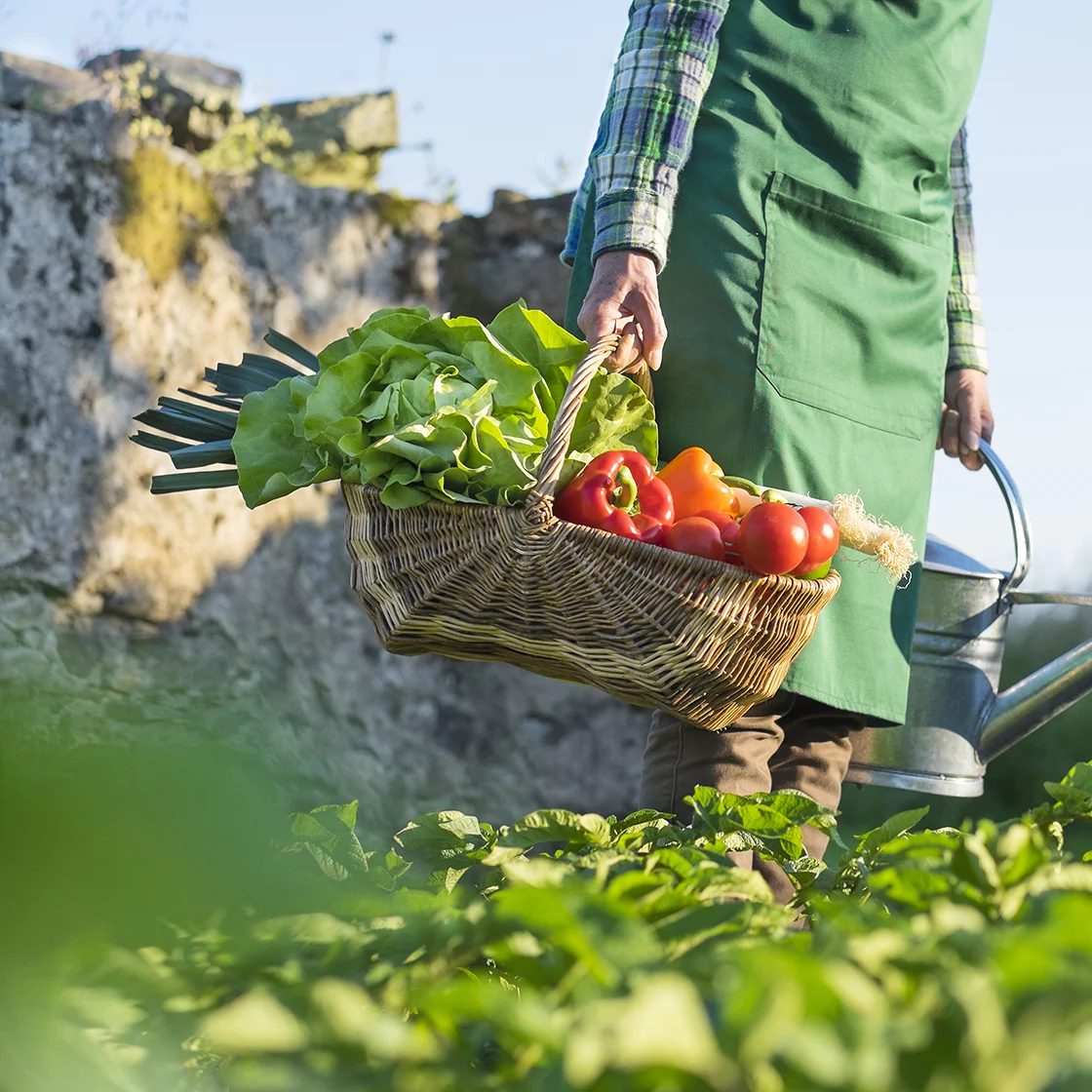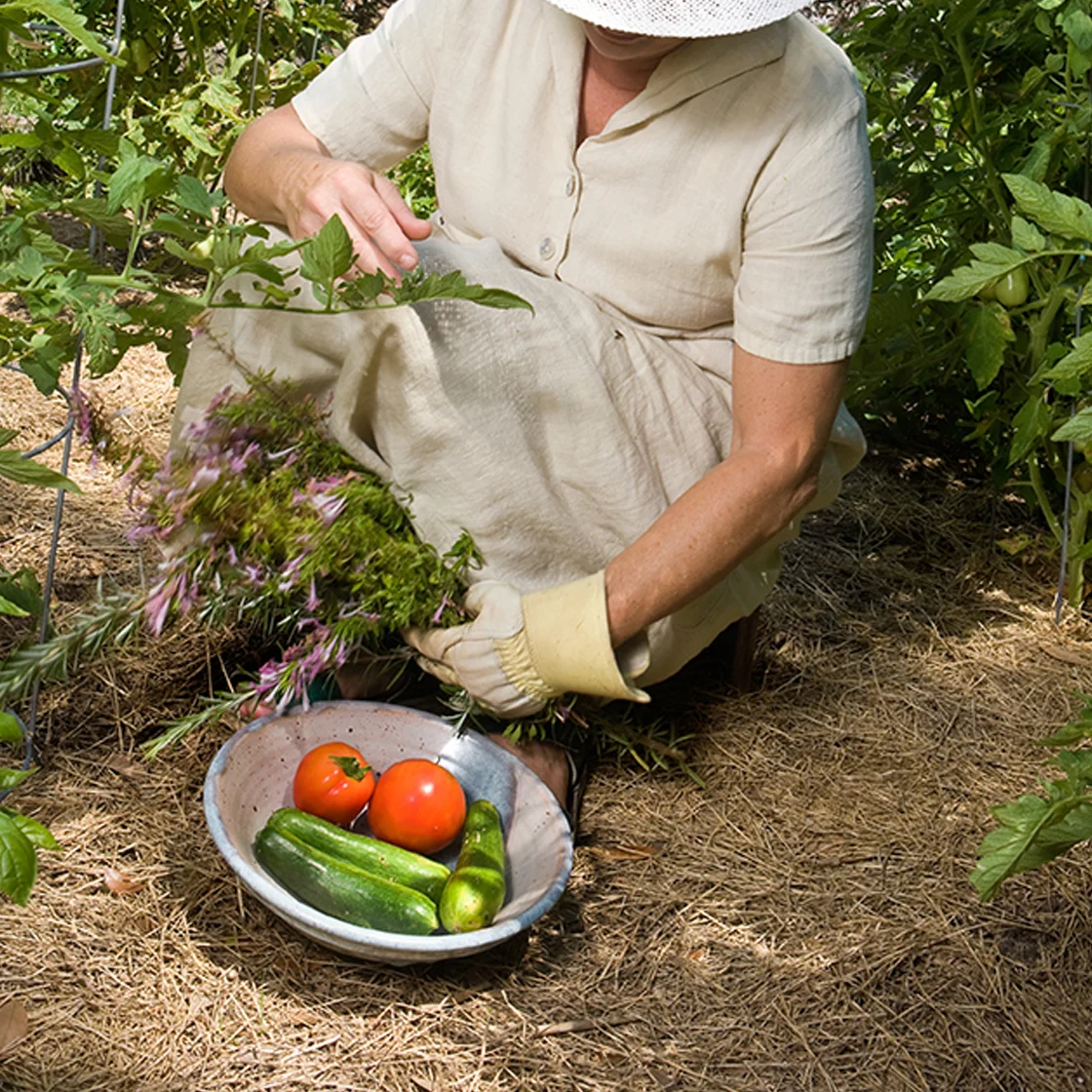Vegetable Garden Timeline: Here’s How to Know What to Plant & When

Every home gardener wants to maximize their growing season. Knowing which plants can tolerate cold weather can give you a jump on spring planting, and also let you plant into early fall. Succession planting can also be a huge benefit: it will help maximize your garden’s efficiency and increase productivity throughout the growing season. Here’s some tips to get you started.
Seed Starting
Seed starting is a great way to start your garden early. This practice involves planting your seeds indoors during winter, nurturing the tender shoots under grow lights, and transplanting them to the garden in spring. This gives your vegetables a four- to six-week head start vs. sowing seeds directly to the garden in the spring. Many different types of seed starting kits are available to suit your space and budget. Here are some other benefits of seed starting to consider:
You generally get a higher seed germination rate indoors because you control conditions like light, warmth, and moisture
Plants started indoors are protected from pests and disease, and should grow faster and stronger
Seeds allow you to access more varieties of vegetables than the seedlings offered at your local garden centre
Seeds are less expensive than seedlings


Spring Vegetables
Cool season crops can be planted and will thrive in the chill of early spring. Some plants can even endure short periods of frost. In fact, frost on kale leaves can make them even sweeter! In general, vegetables classified as “hardy” can tolerate hard frosts and temperatures between -5°C and -10°C, whereas “semi-hardy” vegetables can handle lighter frosts and temperatures around freezing (0°C). If you’re using fertilizer be sure to add it during your first planting, and check the last frost dates in your area when considering what and when to plant:
Hardy Vegetables
Asparagus
Broad Beans
Broccoli
Brussels Sprouts
Cabbage
Collard Greens
Fennel
Garlic
Horseradish
Kale
Kohlrabi
Leeks
Onions
Parsley
Peas
Radishes
Spinach
Turnips
Semi-Hardy Vegetables
Beets
Carrots
Cauliflower
Celery
Chard
Chinese Cabbage
Endive
Lettuce
Mustard
Parsnip
Potatoes
Radicchio
Rutabaga
Salsify
Swiss Chard
Summer Vegetables
Warm-season crops need full sun and require higher air and soil temperatures. However, you’ll still want to apply a mulch to prevent the soil from getting too hot, and to inhibit weed growth. Unlike cool-season vegetables, they only have one growing cycle that ranges from late spring to late summer. After that, nighttime temperatures can drop low enough to damage the plants. Cucumbers, for example, turn bitter if the nights get too cold. Choose your favourites from this list of summer vegetable:
Beans (Lima & Snap)
Cantaloupe
Cucumbers
Eggplant
Melons
Okra
Peppers (Bell & Hot)
Pumpkins
Soybeans (Edible)
Squash
Sweet Corn
Sweet Potatoes
Tomatoes
Watermelons
Zucchini

Succession Planting
Succession planting is a method of staggering your planting to create a continuous supply of produce. Radishes are a great early season crop. They grow fast, prefer cooler weather, and can be planted in late April or early May. Lettuce is also good. In fact, many leafy greens need to be pulled before the hot weather hits. If left too long, they will bolt (go to seed) and their flavour will turn bitter. Once harvested, you can plant the very same space with a warm weather crop like tomatoes. These will bask in the glory of high summer heat until late September. Then you harvest again and replace them with another cold weather crop like spinach to finish out the growing season. It requires a bit of planning, but you’ll soon be harvesting your favourite veggies from spring right through to fall! Here are some of the key benefits:
Maximize your garden yield
Maximize the space in your garden
Extend your growing season
Get fresh produce all season long
Reduce the need to store or preserve large harvests
Minimize the risk of crops being ruined by weather, pests, or disease
Create a Succession Planting Schedule
Whether you’re planting directly to soil or in raised garden beds, you’ll need to create a schedule to identify quick-growing, cool-weather crops that will thrive in your early spring planting and/or your fall planting. You have more latitude with your summer veggies, as many types are able to mature in the window between your spring and fall plantings. So in addition to weather, the key to succession planting is knowing the time to maturation for the vegetables you want to grow. Here’s a helpful list of maturation times in days:
Artichokes: 120
Arugula: 30
Asparagus: 365
Beans (Bush, Pole & Lima): 60-70
Beets: 40-70
Broccoli: 60-70
Brussels Sprouts: 90-120
Cabbage: 70-110
Carrots: 85-95
Cauliflower: 50-65
Celery: 100-140
Collards: 60-75
Corn: 60-100
Cucumber: 50-70
Eggplant: 100-120
Endive: 85-100
Fennel: 90-115
Garlic: 100
Horseradish: 140-160
Kale: 70-80
Kohlrabi: 40-60
Leeks: 120-170
Lettuce & Leafy Greens: 45-85
Melons: 70-100
Okra: 50-65
Onions: 100-175
Parsnips: 100-120
Peas: 60-70
Peppers: 60-90
Potatoes: 70-120
Pumpkin: 85-120
Radish: 25-45
Rutabaga: 80-120
Spinach: 35-45
Squash: 50-65
Sweet Potatoes: 90-170
Swiss Chard: 55-60
Tomato: 50-90
Turnip: 80-120
Zucchini: 30-55
Knowing the difference between cool- and warm-season vegetables is essential for successful vegetable gardening. Plant maturation times and first and last frost dates are also important. It takes a bit of planning, and attention throughout the growing season, but the rewards are well worth the time